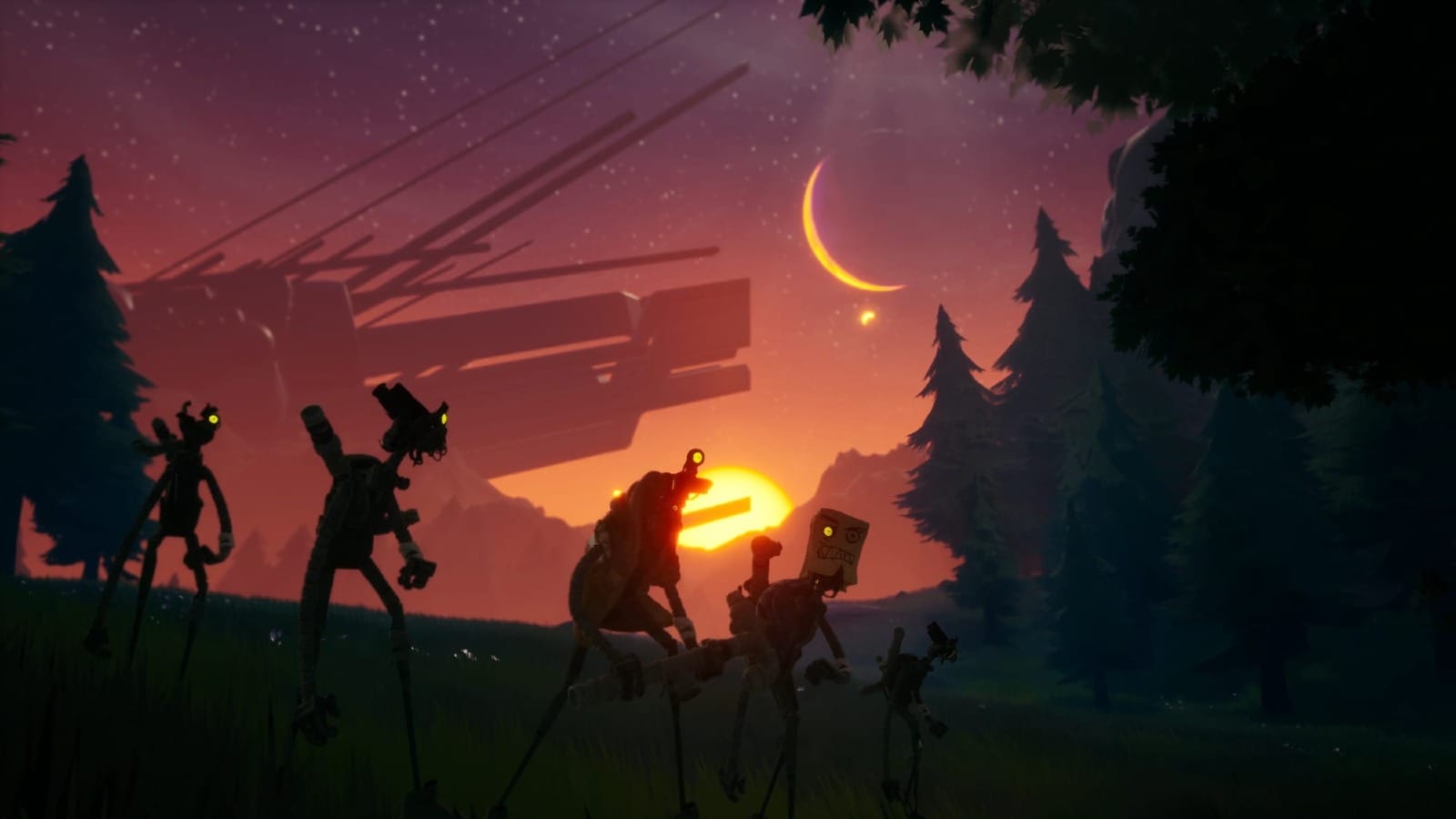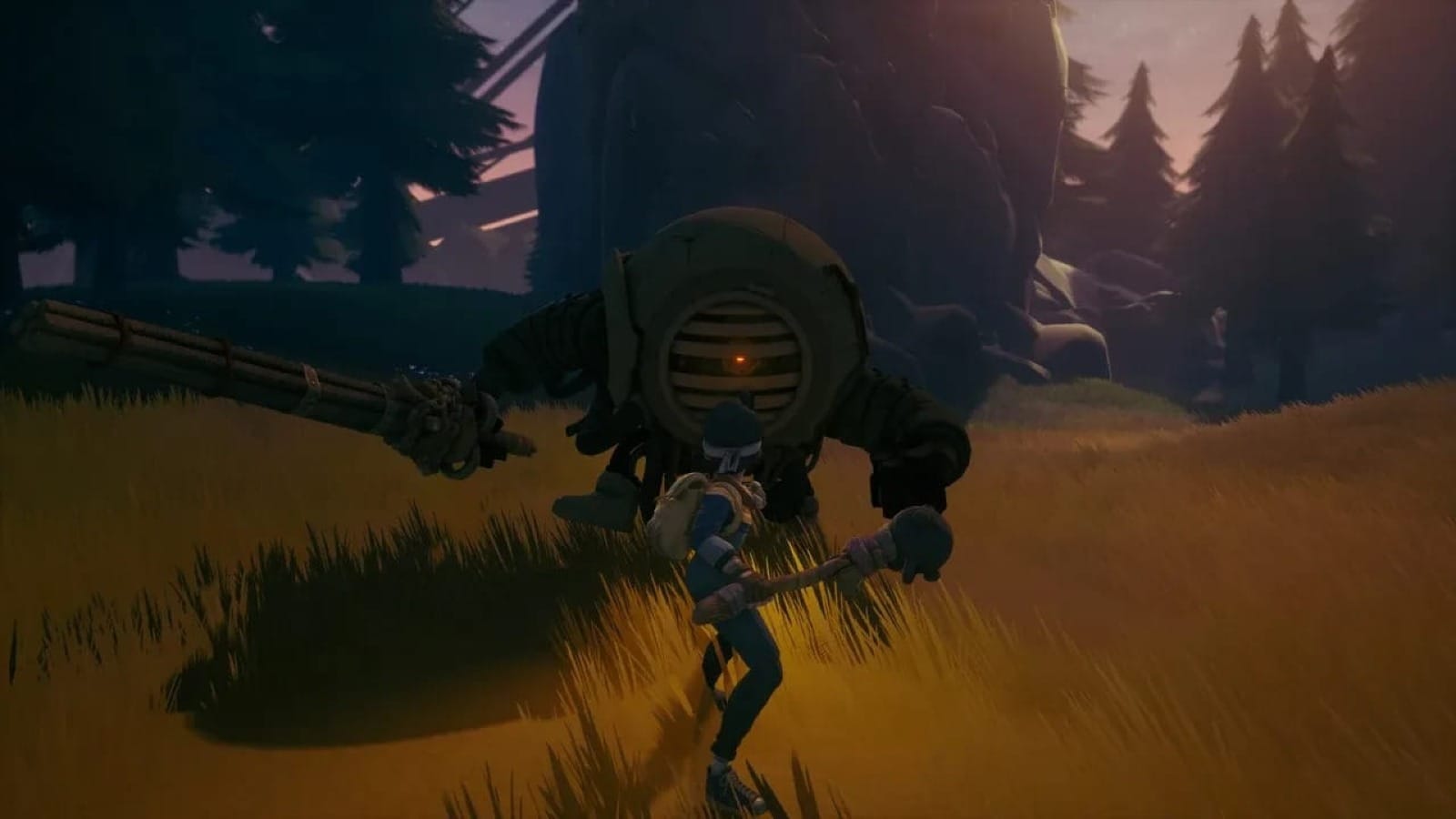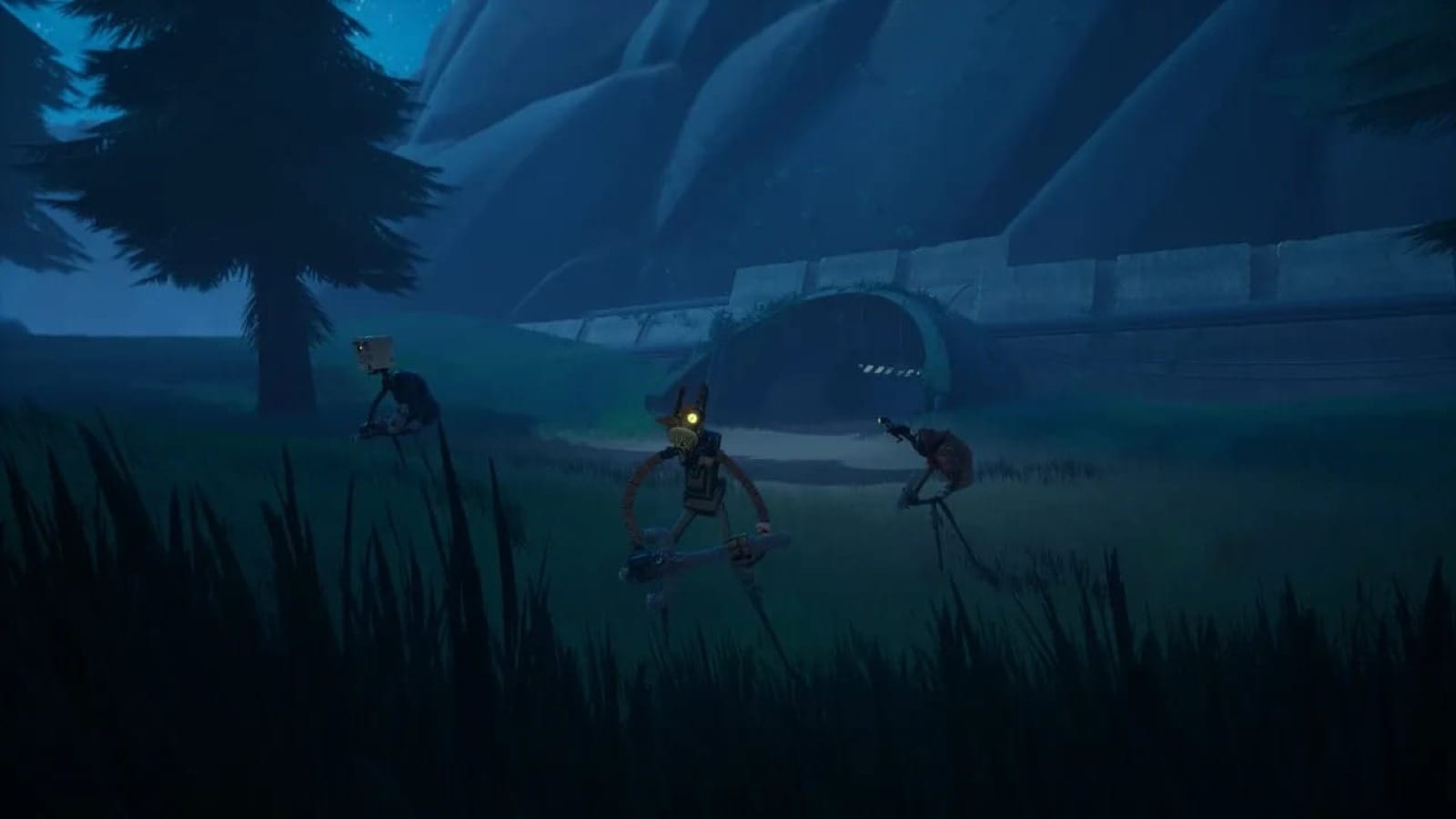
When I booted up Robots at Midnight, I entered a neon-washed dystopia steeped in mystery—and it immediately took me back to playing through BlueTwelve Studio’s dystopian adventure game, Stray. I felt a lot of similarities between both games while playing in terms of the story and how the world unveils itself as you explore. Gameplay-wise, they are very different, and although it won’t satisfy those craving a sprawling epic, there are some things here to admire, especially for players eager to see what bits of the soulslike genre can be reimagined with some sci-fi flavor injected in.
Robots at Midnight introduces us to Zoe, our young and eager hero, waking from twenty years of cryo-sleep to a ravaged world. Discovering her father has gone missing, the journey begins with setting out to find out not only what happened to Zoe’s father, but what happened to everyone on the planet. Along the way, you’ll encounter a slew of NPC robots showcasing a variety of personalities that offer quests to gain upgrade materials and weapons. Additionally, some even give out pieces of lore on the planet and the mysteries surrounding an event known only as The Blackout.

One of the more standout things about Robots at Midnight’s narrative is how it blends this sort of retro-futurism environment with ruin and decay. The game takes place on Yob, a barren planet that once hosted the wealthy and luxurious, but now is plagued by corrupted robot automations. The team excelled in creating an atmosphere that encouraged exploration and discovery. Throughout my playthrough, I felt like an isolated scavenger going out of my way to search every corner and walk down every path, searching for any clue that could help connect the dots on the ever-growing mystery around me. Environmental storytelling isn’t everyone's cup of tea, but for those who do enjoy it, I think they will have a solid time with it here.
At its core, Robots at Midnight feels and plays like a game inspired by those who’ve come before. If you’ve played any of the growing soulslike games released in recent memory, this feels very familiar. The combat loop wants you to learn reading, parrying, and dodging enemy attacks, with the wildcard feature being MITT. MITT, Zoe’s space-gauntlet, lets you dash, punch, launch, or shoot, throwing in some abilities to be used alongside the melee attacks.
There is a gear and weapon system, but the variety of choice is limited to a few different options. Mainly, the two weapon types were fast-attacking and low damage, or vice versa. I felt the biggest thing holding it back was the lack of options and variety. The weapon and armor options were very limited, and with an expanded system, it would’ve elevated the rest of the experience.

Offering players two difficulty modes to choose from, we have Hero Mode, which leans into exploration and narrative, and Master Mode for players wanting the grueling challenge the genre is known for offering. This accessibility is welcome, and after putting some time into both, each mode is balanced as advertised. In hero mode, nearly all of the regular enemies can be taken out in one basic combo, and the parry window, while inconsistent, was much more forgiving than in Master. Those looking for the challenge will be glad with Master Mode because the difficulty is scaled. Many of the enemies will take you out in one to two hits, consistently offering that punishing yet rewarding experience the genre is known for.
Even with its charms, Robots at Midnight isn’t without flaws. The story is incredibly brief, clocking in around 4-5 hours in Hero Mode, and stretched out to between 6-10 hours for Master Mode (depending on your skill level). Besides new game plus, the experience ends there, so, for me, the question gamers will need to ask themselves becomes “Is a 5-hour Soulslike game worth $20?” Robots at Midnight is fun and doesn’t take a hundred hours to do everything, but it can also be beaten in an afternoon. For me, as someone who isn’t a huge fan of the genre, I’m not sure. The answer will be different for everyone.
Another frustration is the surprisingly small roster of enemy archetypes. Many foes feel like variations on the same original—wrench-wielders, bats, slow bots, and occasional heavy hitters. It slowed the experience down when you encountered the same few bots that attack the same way throughout the game. What should be intense moments when you're surrounded or ambushed, became trivial once you faced it once or twice, because the predictability hampered the gameplay.

Performance was one of the more inconsistent parts of my experience with Robots at Midnight. From walking past textures falling flat to frame drops and game bugs in the final boss fight, the game did not perform well in some of the most crucial times I was playing. I played my copy on the PlayStation 5, and in nearly every boss fight, I experienced some sort of technical issue. While frame drops and audio loss aren’t game-breaking, I ended up having to relaunch the game and replay the final fight due to a very unfortunate glitch.
Overall, Robots at Midnight doesn’t reinvent the soulslike wheel, and in many ways showcases the foundation on which the team drew inspiration. But what it does bring is a stylized, condensed experience that I think is a viable option for people curious about both sci-fi adventure and soulslike games. If you're looking for a 20-dollar weekend filler of sci-fi action with talking robots, challenging action, and mysterious lore, this is one gamers should look into. Just don’t expect dozens of hours of replay or infinite surprise.
For future iterations, I’d love to see deeper combat progression (skill tree or weapon variety), more enemy variety (to break up the monotony), and better polish all around. Still, Robots at Midnight is a solid outing from a studio I hope to see more from.
Robots at Midnight
Good
Robots at Midnight is a short but sweet sci-fi soulslike that blends moody environmental storytelling with challenging combat and a unique gauntlet mechanic with MITT. While its atmosphere and accessibility are great, limited variety, technical issues, and a brief runtime may leave some players wanting more.
Pros
- Unique neo-dystopian setting
- Interesting NPC personalities
- Fun and easy to learn combat
Cons
- Can be beaten in an afternoon
- Shallow combat progression
- Game performance is rough with visual glitches and game bugs
This review is based on a retail PS5 copy provided by the publisher.
